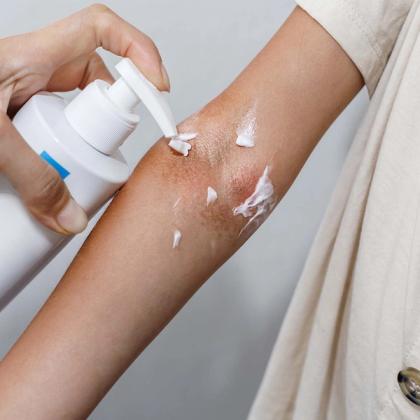This podcast episode is worth 0.25 CPD credits. Upgrade to Pro
Emollients are moisturisers that help soothe, hydrate and protect the skin by forming an occlusive barrier to lock in moisture. They are commonly used to treat dry, rough and scaly skin conditions such as eczema, psoriasis and dermatitis, and work by softening and smoothing the skin, reducing water loss and improving the skin's natural barrier function. As a result, they play a vital role in skin care, especially for those with dry or compromised skin, and come in various forms, each suited to different levels of dryness and skin conditions. Regular use of the right emollient can help maintain the skin's moisture balance, provide relief from irritation and support overall skin health. In this episode, Dr Roger Henderson looks at the different types of emollients available, which ones to choose for your patient, and how they should be used for the best results.
Key references
- British Association of Dermatologists. https://www.bad.org.uk/pils/emollient-use-in-skin-conditions/.
- Primary Care Dermatology Society. https://www.pcds.org.uk/clinical-guidance/emollients.
- Moncrieff G, et al. Clin Exp Dermatol. 2013;38(3):231-238. doi: 10.1111/ced.12104.
- British National Formulary. https://bnf.nice.org.uk/treatment-summaries/emollient-and-barrier-preparations/.
Key take-home points
- Dry skin conditions are common, and all healthcare professionals should be aware of the place of emollient therapy in managing mild-to-moderate skin conditions.
- An emollient is defined as a lipid or oil that hydrates and improves the appearance of the skin, reduces clinical symptoms of dryness and scaling and improves sensations, including itching and tightness.
- Humectant ingredients such as urea can enhance the moisture-retaining ability of emollients and therefore their effectiveness.
- Patient education and patient choice are both equally important for treatment adherence and achieving the best possible outcomes for managing the symptoms of dry skin conditions.
- Complete emollient therapy (CET) is essential for daily management of chronic inflammatory skin conditions, where dry skin is a key symptom.
- Explain to patients the importance of skin barrier repair and why emollients are necessary to achieve it; the skin barrier requires constant repair, achieved by the daily use of emollients for washing and moisturising – known as CET.
- The key principle of CET is that everything that goes on the skin should be emollient-based.
- Aqueous cream BP should not be prescribed or used at all for people with dry skin, even as a soap substitute – it actually weakens the epidermal barrier and appears to cause more skin damage.
- Ask the patient which emollient(s) they are using, how much they use and how often; it is important to understand the quantities and frequency of emollient use, to help develop accurate treatment plans.
- Offer the patient a choice of emollients: sometimes more than one product may be required to achieve CET (for example, ointment for night-time use and a cream for during the day).
- Give precise instructions: revise application techniques with the patient, including how and when to apply.
- Prescribe in generous amounts: patients should be prescribed emollients as first-line therapy for dry skin conditions, and it is important to ensure they have enough to last until their next prescription.
- Review the patient to assess the effectiveness of CET: patient review is very important to assess the effectiveness of emollient therapy, check the patient is happy with their emollient choice, and revise application techniques and amounts applied.
- If CET in combination with topical treatments is not controlling your patient’s skin condition, or it is becoming more severe and you are confident that they are adhering to your treatment guidelines, then referral to a dermatology specialist should be considered.
- Emollients should be applied all over the body, not just to the affected areas.
- Application of emollients is a maintenance treatment, used as a means of preventing future flares.
- Emollients should be used at least twice daily to help keep the skin smooth and moisturised.
- For full-body use, an adult should use at least 500 g of emollient per week; a child should use at least 250 g of emollient per week.
- The equivalent of one pump from a pump dispenser or one teaspoon is 4 g.
- Patients should be offered smaller packs for use at work or school in addition to their main prescription.
- Always ensure a gap of at least 15 minutes between application of emollients and topical steroids.
- Emollients have a steroid-sparing effect and should be supplied in a 10:1 ratio of emollient to steroid in order to achieve the full benefit.
- There is no place for aqueous cream products, even as washing agents.
- In the UK, patients should be made aware of the NHS pre-payment option, where appropriate.
Create an account to add page annotations
Annotations allow you to add information to this page that would be handy to have on hand during a consultation. E.g. a website or number. This information will always show when you visit this page.
